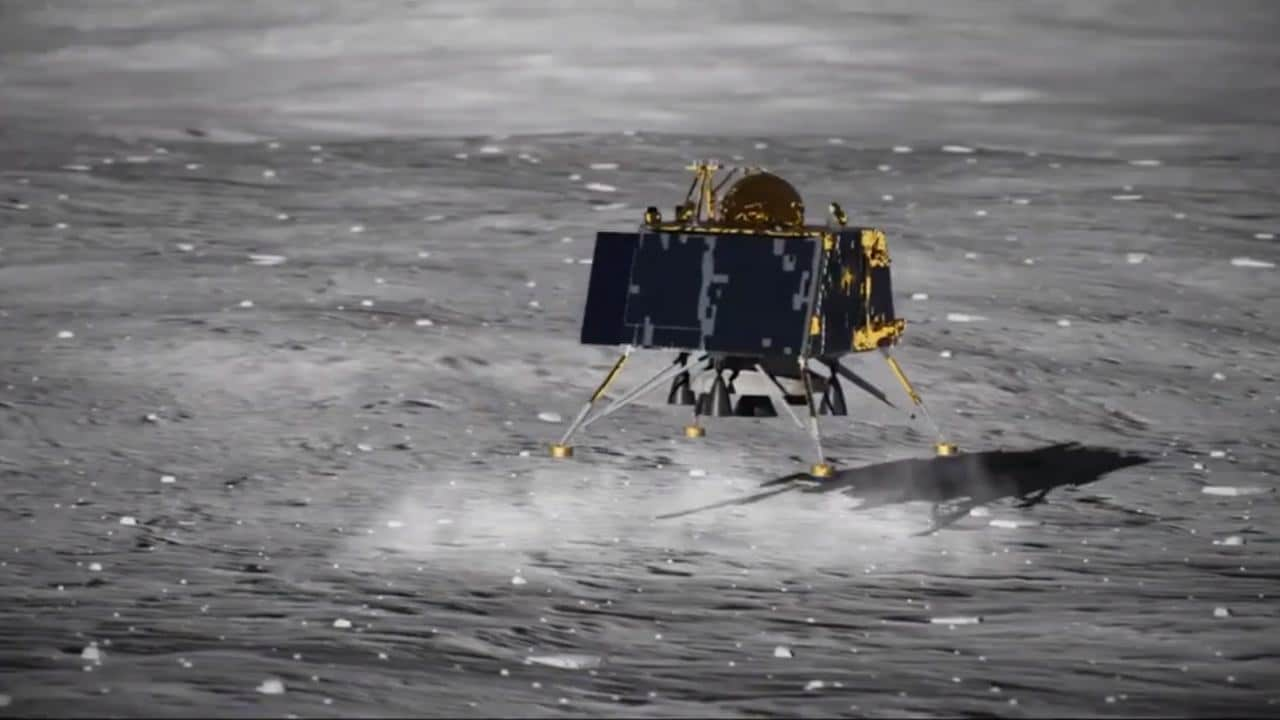Press Trust of IndiaSep 21, 2019 11:55:27 IST
Hopes of re-establishing contact with India’s moon mission Chandrayaan-2’s lander seems to be all but over with its 14-day mission life set to end and the Lunar night falling early Saturday.
Lander Vikram, with rover Pragyan housed inside it, lost communication with the ground station on September 7 during its final descent, just 2.1 km above the lunar surface, minutes before the planned touch-down on the Moon.
Since then, the Indian Space Research Organisation has been consistently saying all possible efforts were being made to establish contact with the lander, though hopes kept fading with the lunar night phase approach.
It was stated that the lander made a hard landing.
The lander, designed to execute a soft-landing on the lunar surface, and rover have a mission life of one Lunar day, which is equivalent to 14 earth days that ends Saturday.
ISRO has said once the Lunar night falls, there would be no sunlight for the lander to generate power for its working and also it was not designed to operate in the heavy cold temperature of Moon during the phase.
However, there has been no official word from the ISRO on the eve of nightfall.
The space agency had on Thursday said a national-level committee comprising academics and ISRO experts are analysing the cause of communication loss with Chandrayaan-2 lander.
On September 8, ISRO said the lander was spotted on the lunar surface by camera on-board of the Chandrayaan-2 orbiter.
The orbiter of India’s second lunar mission continued to perform scheduled science experiments to “complete satisfaction” and performance of all its payloads were “satisfactory”, it has said.
ISRO from the day of losing contact with the lander had been upbeat about the performance of the orbiter.
Till date, 90 to 95 per cent of the Chandrayaan-2 mission objectives have been accomplished and it will continue contributing to Lunar science, notwithstanding the loss of communication with the Lander, ISRO had said on September 7.
It had also noted that the precise launch and mission management has ensured a long life of almost seven years instead of the planned one year for the orbiter.
The orbiter carries eight scientific payloads for mapping the lunar surface and study the exosphere (outer atmosphere) of the Moon.
India’s Geosynchronous Satellite Launch Vehicle, GSLV MkIII-M1 successfully launched the 3,840-kg Chandrayaan-2 spacecraft into the Earth’s orbit on July 22.
The spacecraft successfully entered the lunar orbit on August 20 by performing Lunar Orbit Insertion (LOI) manoeuvre, and on September 2, ”Vikram” successfully separated from the orbiter.
<!–
Find our entire collection of stories, in-depth analysis, live updates, videos & more on Chandrayaan 2 Moon Mission on our dedicated #Chandrayaan2TheMoon domain.
–>

Post a Comment